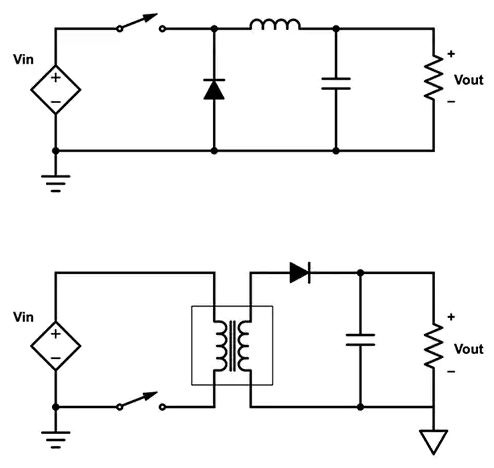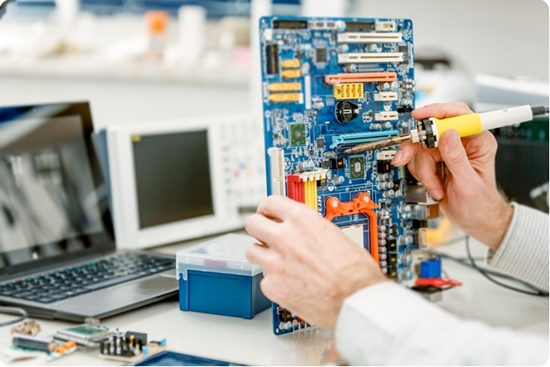albisteak
Kalitate Kontrolaren garrantzia Txinako DC-DC bihurgailuen fabrikazioan
Egilea: ZYG Power Module Time: 2023-3-31
Quality control is crucial in every aspect of manufacturing, especially in China DC-DC converter manufacturing. DC-DC converters are devices that convert one voltage level to another and are used in various industries, including automotive, aerospace, medical, and electronics. Quality control ensures that the DC-DC converters meet the required specifications, performance standards, and safety regulations. In this article, we will discuss the importance of quality control in China DC-DC converter manufacturing.
DC-DC Converter Basics
DC-DC converters are devices that convert one voltage level to another. They are made up of several components, including inductors, capacitors, diodes, and transformers. The converter operates by using pulse width modulation to regulate the output voltage as per the input signal. These converters come in various sizes, shapes, and models to meet the different needs of various industries.
Meeting Performance Standards
Quality control plays a vital role in ensuring that DC-DC converters meet the required performance standards. The performance standards include efficiency, output voltage, and ripple current. Manufacturers must adhere to these standards to ensure that the devices perform optimally under various operating conditions. Quality control checks ensure that the devices meet the targeted specifications and standardization requirements of the intended application.

Enhanced Safety
Quality control is critical in enhancing the safety of DC-DC converters. The converters operate at high voltage levels, making it essential to ensure that the devices are safe for use. Quality control ensures that the devices comply with safety regulations, such as electromagnetic compatibility (EMC) standards and thermal management to prevent overheating. Additionally, quality control checks ensure that there are no defects in the converter that could result in a hazard for the end-users.
Minimizing Defects
Quality control helps to minimize the instances of defects in DC-DC converters by identifying any anomalies in the early stages of production. Manufacturers can use various quality control techniques such as Statistical Process Control (SPC) and Failure Mode and Effects Analysis (FMEA) to detect and resolve issues before production starts. By minimizing the number of defects, manufacturers can reduce production costs and improve customer satisfaction.
Product Reliability
DC-DC converters must be reliable to meet the needs of various industries such as defense, aerospace, and medical. Quality control ensures that the devices are reliable by testing them under various conditions to ensure that they can perform optimally under varying environments. Additionally, quality control checks ensure that the devices are durable and can withstand physical and thermal stresses.

Customer Satisfaction
The quality of DC-DC converters is essential in ensuring customer satisfaction. Customers expect products to meet their specific requirements and operate as expected. Quality control checks ensure that the devices meet these requirements, and they are tested to ensure that they perform optimally. By achieving customer satisfaction, manufacturers can build a reputation for providing high-quality products leading to repeat orders and positive word of mouth.
Efficiency and Cost-Effectiveness
Quality control plays a role in improving the efficiency and cost-effectiveness of DC-DC converter manufacturing. By ensuring that the devices meet the required specifications and standards, manufacturers can reduce the number of errors, rework, wastage, and associated costs. Additionally, quality control checks ensure that the production processes are optimized and streamlined for maximum efficiency.
Conclusion
Quality control is crucial in China DC-DC converter manufacturing as it ensures that the devices meet the required specifications, performance standards, and safety regulations. Quality control helps to enhance product reliability, customer satisfaction, and cost-effectiveness of manufacturing. Manufacturers must invest in quality control techniques such as SPC and FMEA to minimize defects and optimize the production process. By doing so, they can ensure that the devices perform optimally under varying conditions and environments. With the increasing demand for DC-DC converters across various industries, manufacturers must strive to provide high-quality products through quality control, ultimately leading to business growth and customer satisfaction.
Aurrekoa: Nola konpondu potentzia-modulua aukeratzeko arazoa
Hurrengoa: AC-DC bihurgailuen fabriken etorkizuna: ikusi beharreko joerak eta teknologiak
informazio garrantzitsua
-
2023-4-21
AC-DC Power Supply: Potentzia elektrikoaren iturri fidagarria
AC-DC elikadura hornidura korronte alternoa (AC) korronte zuzena (DC) bihurtzen duen gailu bat da, energia elektriko iturri fidagarri eta egonkorra eskaintzeko. Elikatze-iturri mota hau gailu elektronikoetan erabili ohi da, bateriaz funtzionatzen duten gailu txikietatik hasi eta industria ekipamendu handietaraino. AC-DC elikatze-iturri baten abantaila nagusia DC potentzia iturri konstante eta egonkorra eskaintzeko gaitasuna da, AC sarrerako tentsioaren gorabeherak gorabehera. Hau zuzentzaile eta tentsio erregulatzaileen bidez lortzen da, zeinak AC tentsioa DC bihurtzen dute eta irteerako tentsioa erregulatzen dute hurrenez hurren. Merkatuan AC-DC elikatze-hornidura mota desberdinak daude, besteak beste, elikadura linealak, etengailu moduko potentzia...
Ikusi xehetasunak -
2023-4-27
AC-DC Power Supply: Providing Reliable and Efficient Power Conversion
As technology continues to evolve, the need for reliable and efficient power conversion has become increasingly important. One of the most commonly used types of power supplies is the AC-DC power supply. This type of power supply is used in a wide range of applications, from consumer electronics to industrial machinery.An AC-DC power supply is designed to convert the alternating current (AC) that comes from a wall outlet into direct current (DC) that can be used by electronic devices. The conversion process involves several stages, including rectification, filtering, and regulation. Each of these stages plays a critical role in ensuring that the output voltage and current are stable and free from unwanted noise and distortion.The rectification stage is the first...
Ikusi xehetasunak -
2023-8-23
AC DC Converter ZP Series: Efficient Power Conversion for All Your Needs
Introduction: The demand for efficient power conversion solutions is higher than ever before. An AC DC converter is an essential component that enables the conversion of alternating current (AC) to direct current (DC), making it suitable for various applications such as power supplies, electric vehicles, renewable energy systems, and more. The ZP Series AC DC converter is a top-of-the-line product designed to provide efficient power conversion for all your needs. This article will explore the features, benefits, and applications of the ZP Series, highlighting why it is the ideal choice for your power conversion requirements. Efficient Power Conversion: One of the key features of the ZP Series AC DC converter is its exceptional efficiency. With an efficiency rating of up...
Ikusi xehetasunak -
2023-8-10
DC DC Power Supply DM Series: Reliable and Efficient Power Source
Introduction In today's rapidly advancing technological landscape, the demand for reliable and efficient power sources has never been greater. From smartphones and laptops to electric vehicles and renewable energy systems, the need for stable and high-quality power supply is critical. The DC DC Power Supply DM Series stands out as a reliable and efficient power source that caters to a wide range of applications. This article will delve into the features and benefits of the DM Series and explore why it is the preferred choice for many industries. Reliability and Durability One of the key attributes of the DC DC Power Supply DM Series is its exceptional reliability and durability. Built with high-quality materials and advanced engineering, these power supplies...
Ikusi xehetasunak -
2023-11-28
DC to DC Step Down Adjustable Power Supply Module: Versatile and Efficient Voltage Control Solution
The need for efficient and reliable voltage control is paramount. Whether it is for industrial applications, electronic devices, or even hobbyist projects, a stable and adjustable power supply module is essential. One such solution that has gained immense popularity is the DC to DC Step Down Adjustable Power Supply Module. The DC to DC Step Down Adjustable Power Supply Module is a versatile and efficient voltage control solution that offers a wide range of benefits and features. Its primary function is to convert a higher voltage level into a lower voltage level while providing a stable power supply. This makes it ideal for a variety of applications where precise voltage control is required. One of the key advantages of this...
Ikusi xehetasunak -
2023-8-5
AC/DC Power Supply Module: Providing Reliable Electrical Power for Various Applications
Introduction In the modern world, reliable electrical power is essential for the smooth functioning of various applications. From electronic devices to industrial machinery, a stable power supply is crucial to ensure optimal performance and prevent damage due to voltage fluctuations. This is where the AC/DC Power Supply Module comes into play. Designed with precision and efficiency in mind, this module is a reliable solution for meeting the power requirements of diverse applications. Understanding the AC/DC Power Supply Module The AC/DC Power Supply Module is a compact electronic device that converts the alternating current (AC) power from a wall outlet into direct current (DC) power suitable for powering electronic components. It operates on the principle of electromagnetic induction and employs various...
Ikusi xehetasunak


















